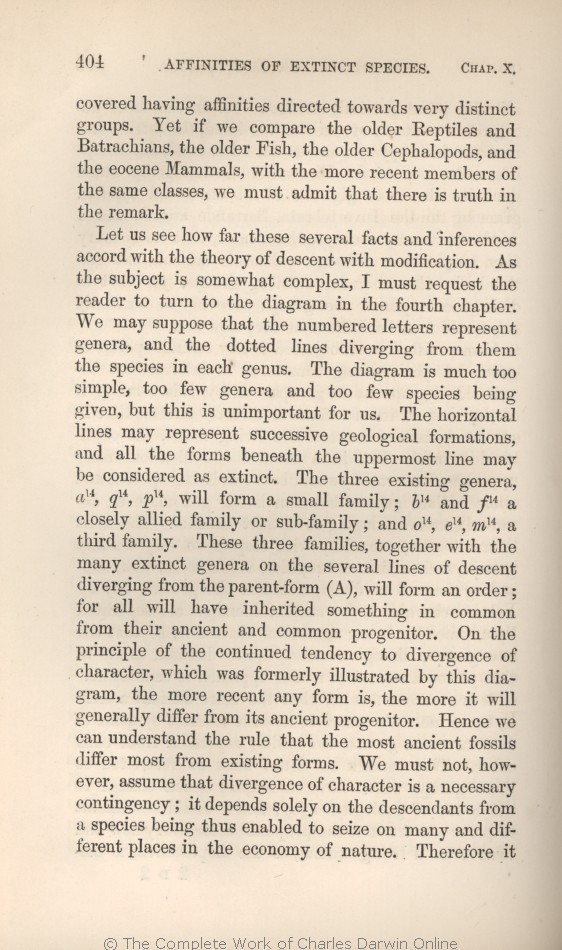Let us see how far these several facts and inferences accord with the theory of descent with modification. As the subject is somewhat complex, I must request the reader to turn to the diagram in the fourth chapter. We may suppose that the numbered letters
represent | represent 1859 1860 1861 1866 1869 |
| in italics represent 1872 |
| genera, 1859 1860 1861 1866 1869 | | genera 1872 |
|
a
14
,
1869 |
|
a
14
,
1859 1860 1861 1866 1872 |
|
q
14
,
1869 |
|
q
14
,
1859 1860 1861 1866 1872 |
|
p
14
,
1869 |
|
p
14
,
1859 1860 1861 1866 1872 |
|
b
14
,
1869 |
|
b
14
1859 1860 1861 1866 1872 |
|
f
14
,
1869 |
|
f
14
1859 1860 1861 1866 1872 |
| (A), 1860 1861 1866 1869 | | A, 1859 | | (A) 1872 |
| order; 1859 1860 1861 1866 1869 | | order, 1872 |
| and common 1859 1860 1861 1866 1869 | and common 1872 |
|









